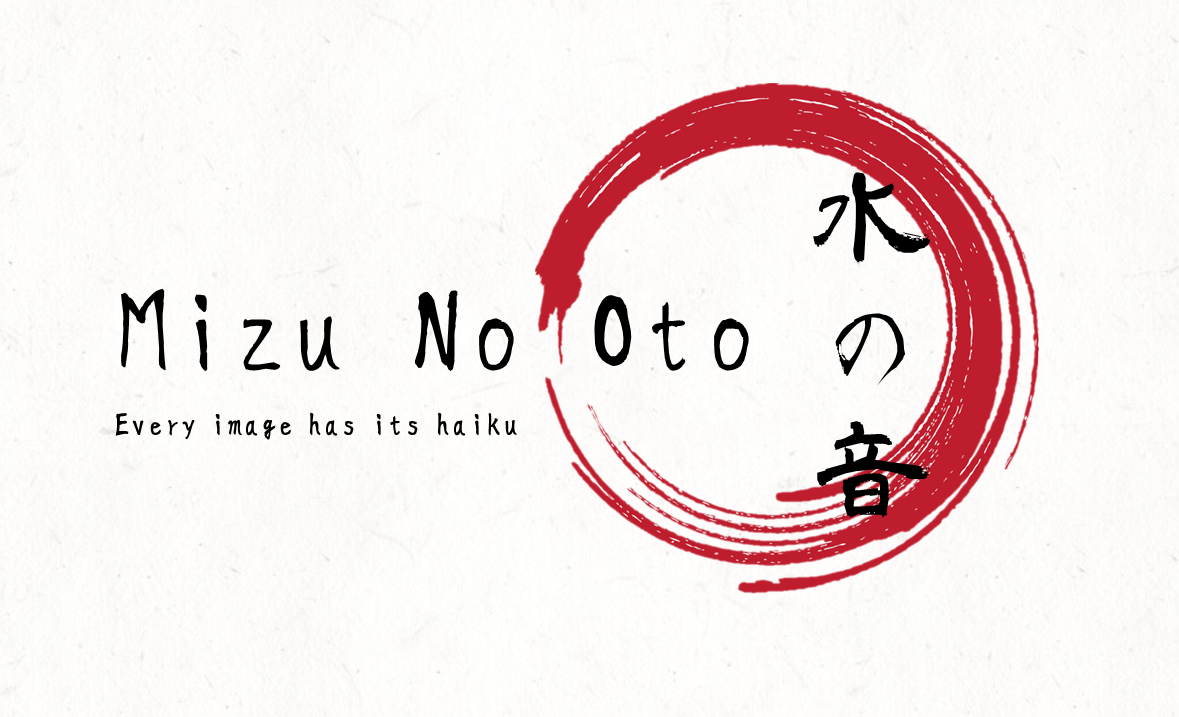This famous haiku was written in 1688 by Matsuo Munefusa (松尾 宗房), better known as Bashō (芭蕉), namely “banana tree” (do you see a secret pattern here too, Bananafish Tribe?).
Bashō was the poet that gave haiku its complete poetic form, isolating the first part of a sequence in collaborative comic compositions called renku (連句), and giving it autonomous life and more dignity.
From the last verse of this haiku, comes the name of the new @bananafish contest:

[banner created by @f3nix]
What's the purpose of the contest?
As in the Finish the Story contest, the main purpose of the Mizu No Oto contest is to have fun together, unleashing our creative potential, writing, reading, commenting and enhancing our skills; in this case poetical skills.
We’d like to create a haijin (haiku writers) community that fully explores the big potential of this short poetic form, too often considered minor or silly.

The tag
Mizu No Oto contest will be characterized by the tag:
#haikucontest
It’s very important to use this tag in every submission post, since it makes them easier to find for curators and supporters!

How it works?
• Look at the image provided in the prompt post and let yourself be inspired by it.
• Write a haiku related to the prompt image. The haiku should be composed by 3 verses with no title. The 1st verse should be 5 syllables long, the 2nd verse should be 7 syllables long, and the 3rd verse should be 5 syllables long again.
• If you aren’t confident with English enough, you can write your haiku in Spanish, French, or Italian as well. Sorry, we can’t read more languages… yet.
• Post the haiku on your blog or in the comment section below the prompt post. If you make your own post, don’t forget to put the link to it in the comment section of the prompt post!

What do you win?
Mizu No Oto has a starting jackpot of 3 @steembasicincome shares:
• The best haiku chosen by Bananafish will be rewarded with 2 SBI shares for its author.
• Furthermore, the most voted haiku by the community will be rewarded with 1 SBI share for its author.
When the contest will be well established, the prizes will increase.

What are the Bananafish criteria of judgment?
There are some qualities that make the Bashō-fish smile mysteriously, sitting in lotus position under his banana tree:
• Kireji (切れ字), a sense or grammar cut between the 1st and the 2nd verses, or between the 2nd and the 3rd.
• Kigo (季語), an explicit or implicit reference to a season.
• Sabi (寂), the sense of the inexorable passage of time.
• Wabi (侘寂), the taste for frugal and natural things.
• Mono no aware (物の哀れ), empathy with nature and human life.
• Yūgen (幽玄), sense of wonder and mystery.
• Karumi (軽み), beauty in simplicity.
• Shiori (しおり), gentleness.
These aren’t strict rules, but elements of poetical sensibility that add value to a haiku, if present.

When Mizu No Oto contest will be out?
This contest will run weekly on @bananafish blog, every Friday around 1:00 PM, GMT -7 (Pacific Daylight Time).

So, dear potassiumholic friends, watch for the first edition of Mizu No Oto on Friday 7th September, and don’t forget #haikucontest tag! Spread the word!
Your humble Bashō-fish zen disciple

